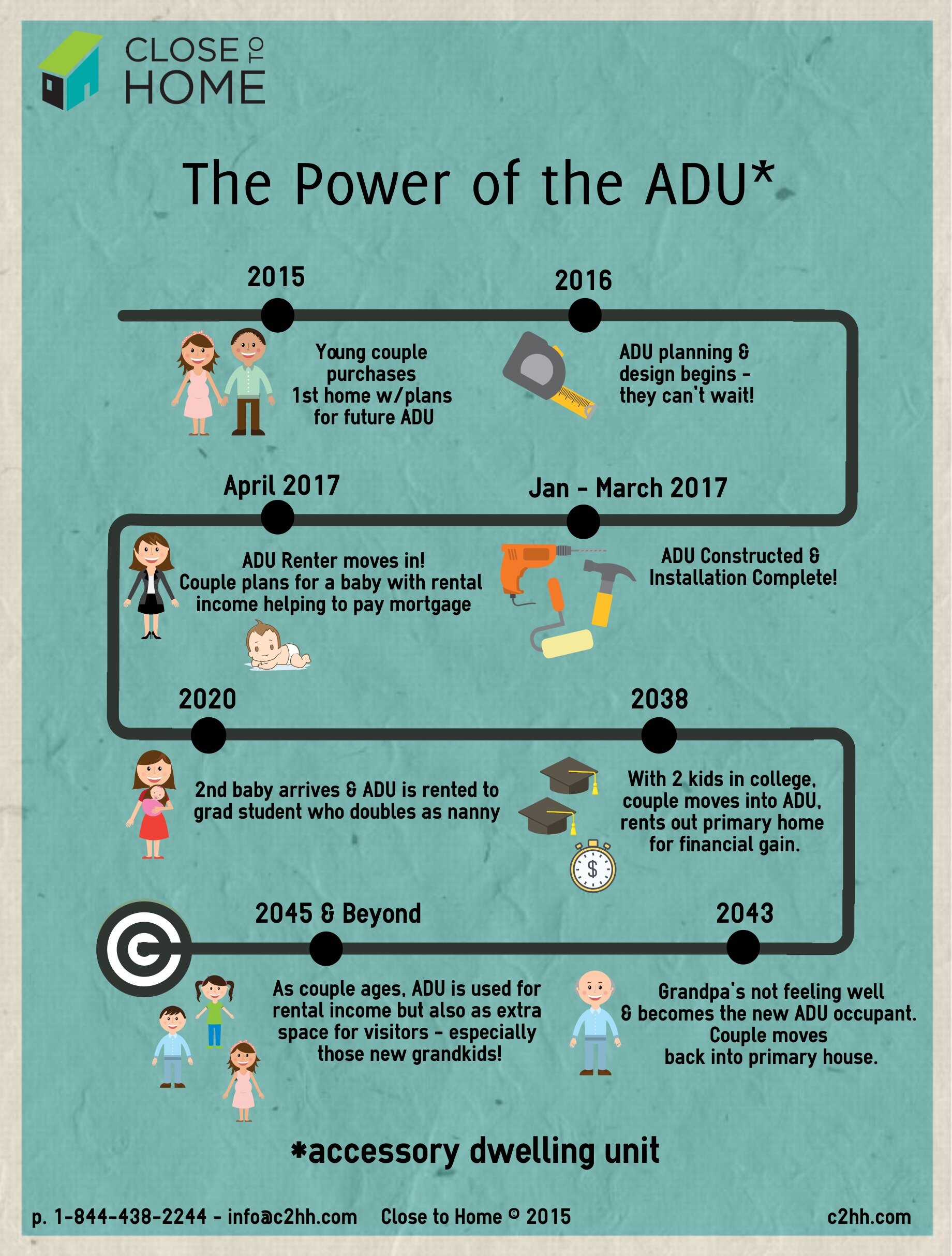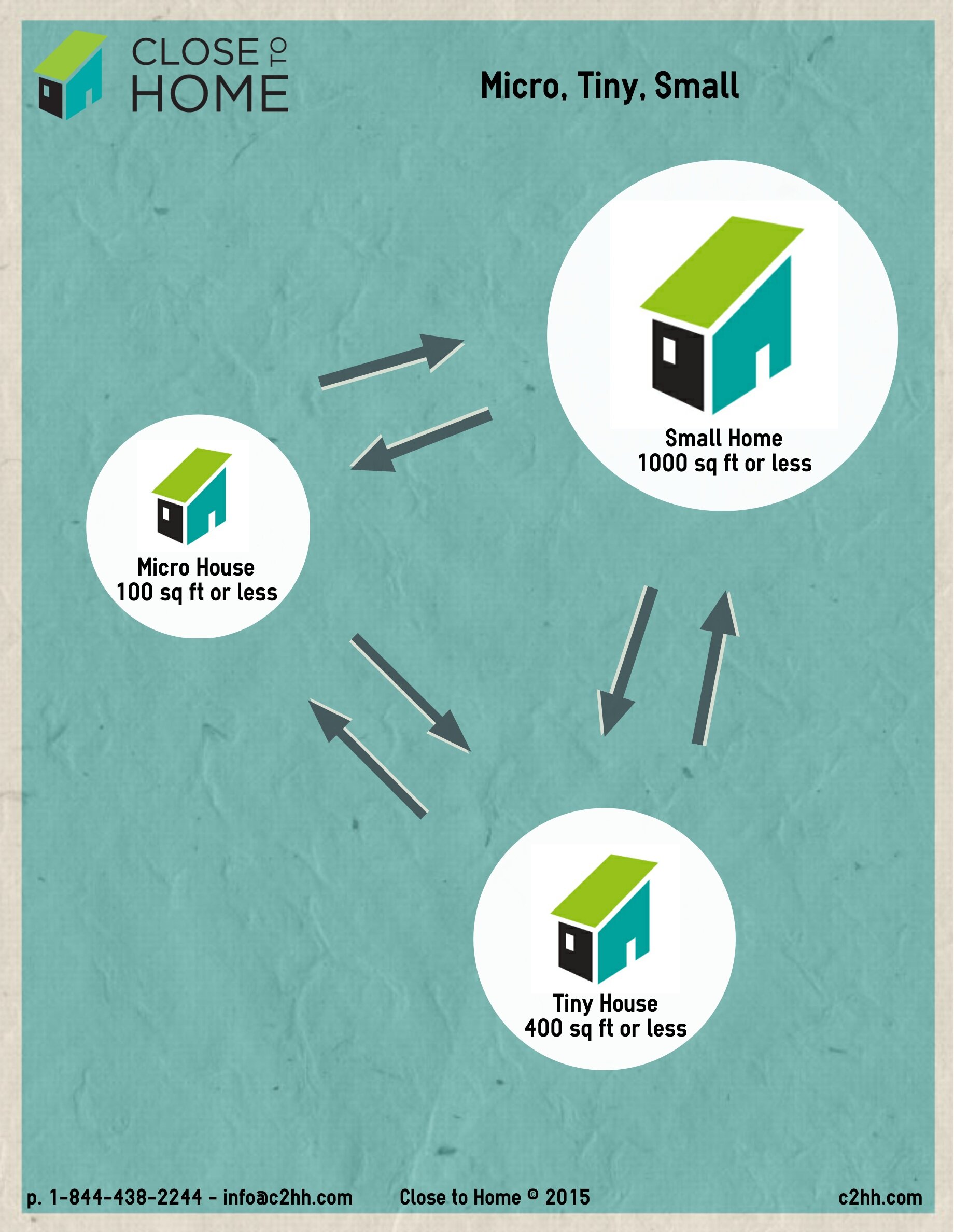In the Close to Home marketplace we have many small homes for sale. A buyer can take their pick – from micro homes to shipping container homes to yurts and back to tiny homes on wheels. A buyer will find an array of choices on our site.
We created the marketplace concept at Close to Home because we want to empower people who are looking for housing after a disaster. We understand that housing needs are different in various communities – there are needs for varying price points, aesthetics, size, etc. in order to appeal to people living in vastly different communities. And we want to empower people with choice and an option to live small as they rebuild alongside their neighbors.
As we acknowledge the tiny home movement – the interest across the United States and abroad in living in less square footage (for numerous reasons) – one cannot help but notice the irony of the market. It is drawing people from all across the spectrum – people choosing to live small, people who have the power to make the decision to downsize – but the market is also a solution for housing those with very little. Small homes are slowly but surely becoming a solution for the affordable housing movements as well as a solution for housing the homeless. And let’s not forget about the people in the middle.
Seattle has been making the national news in the last year because of the soaring economy. One sees evidence of local investment at every turn with high-rise apartments and condos being built and townhome developments going up on what feels like every block. And of course we see beloved businesses closing their doors as new development and higher rent pushes out the old. We hear anecdotally and in the news of the new high rents, soaring sales prices, and of people no longer able to afford to live in the city that they love.
What is the city’s response to the problem? Well, the City of Seattle wants to increase density, recognizes the value of diversity, and is working to nest our single family home zones with more ADUs (Accessory Dwelling Units), i.e., small homes! Small (or tiny) housing might be a solution that allows the city, and others like it, to keep the diverse population that is so attracted to the urban lifestyle.
The Close to Home team spent the first weekend of November in Portland at the “Build Small, Live Large” conference. We immersed ourselves in the discussions of the ways that living small might save our cities – as well as provide the answers to housing issues across the country. The idea of the accessory dwelling unit is an old one that is most definitely experiencing a necessary resurgence. A la “Portlandia” we joined a self-guided tour featuring some of the newest builds in Portland. Some of these were built as short term rentals, others for long term, all built with specific homeowner needs in mind – and all most likely generating income and helping with the affordable housing crunch.
This assistance is twofold:
- The homeowner benefits directly – generating income to offset the construction costs and mortgage payments.
- But we have the ADU renter benefiting too – living in a smaller space that ideally is more affordable than other rental options.
Of course, in order to make the ADU movement really successful, we need more of them so that the costs of renting decrease – pushing further down the threshold of “affordable”.

Having mentioned “Portlandia”, the spoof of living in a tiny home is a must see. And it brings up the issue of what all of these labels (micro, tiny, small) really mean. This “tiny” movement is far from exclusionary. It’s all about figuring out what is important to you and your family. The movement encourages us to ask questions such as: How do you spend your day? Are there rooms in your larger home that you really don’t use? Could you save money by moving to a smaller home? How would that feel? Would it benefit the family in any way? Those benefits could be: less money spent on a monthly basis (mortgage and utility savings), savings in the bank, less credit card debt, opportunity to pay off debt, spend more time together as a family in one larger room, etc.

At the conference we listened to an excellent keynote talk by Alan Durning of the Sightline Institute. He discussed the history of affordable housing and the regulations around it. His takeaway message consists of the following 4 points:
- Small is Normal (speaking from a historical context – we used to live small)
- Small is Greener (many fewer resources required as square footage is decreased)
- Small is More Affordable (no explanation necessary!)
- Small is Often Illegal (we must remove the BARRIERS that exist in zoning codes in order to further the potential of small across the country)
Small should be “normal” once again. It’s about time.
Mr. Durning’s well-researched and motivating presentation was followed by a passionate story told by Dee Williams, one of the founders of the tiny home movement. She discussed her decision to build her own tiny home after living for too long a stressful life of working to pay the mortgage on a larger and more expensive home, one that required constant work, upgrades and roommates. That lifestyle literally almost killed her – and it took that health scare for her to take a hard look at her life. She discussed the human connections that have come from living “tiny” – spending more time out in the world in her community – at the library, cooperative grocery store, and connecting with her immediate neighbors. Dee lives in a tiny house on wheels (THOW) and talked about her connections to the family and extended family that invited her to park her home in their backyard. Remaining open to new connections and enjoying the inherent beauty in those relationships was the focus of the experience that she shared with us. Living “tiny” has simply been the means to that end.
And so it goes… as we recognize the potential of “tiny” as a solution to keep disaster survivors “close to home”, more and more people are realizing that various versions of “tiny” might be solutions to their own problems. What an exciting time it is to be in conversation with the visionaries, designers, builders and those pushing the boundaries of what is “normal”. Three cheers for the efforts all around to make tiny big!
–Rachel Stamm, Founder & CEO
